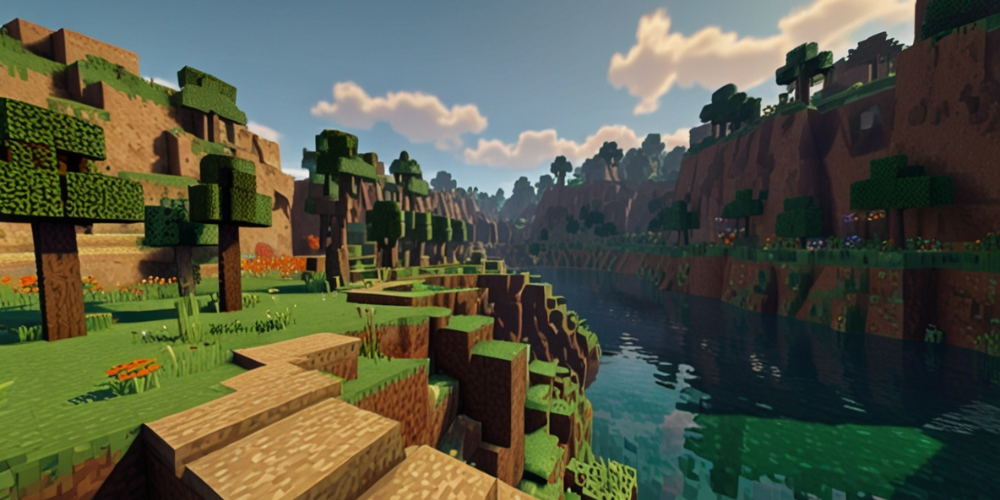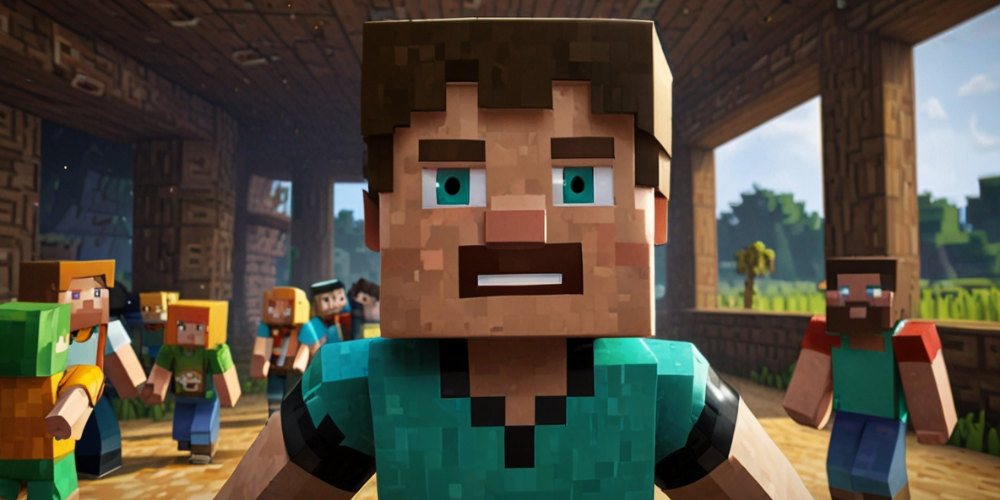
Minecraft can pose quite a challenge for newcomers. With its boundless terrain to trek, a variety of hostile creatures to fend off, numerous items to craft, and complex features that aren't thoroughly introduced, mastering the intricacies can be tough. If you're finding it hard to make sense of this sandbox adventure, here are the initial steps to prioritize in Minecraft for a better chance of enduring the elements. Searching for specifics? Use the direct links below to navigate straight to a certain instruction...
A Detailed Guide for Minecraft Novices to Thrive
In this segment, we'll educate you on collecting resources, forging your initial implements, and constructing a haven to safely pass the nights in serenity and warmth.
Initial Order of Action: Construct a Crafting Table
Your first aim is straightforward: create a Crafting Table. To do this, you'll need to gather Woodblocks by attacking a tree. Secure wood by holding the interaction button (the left mouse button on a PC or the right trigger on a gamepad). Usually, a barrage of around 15 swift punches directed at a tree trunk will cause it to break, allowing you to collect it. Don’t forget to replant any Saplings that tumble from the treetop foliage. As they mature, they will turn into new trees. Also, consider shattering the tree's leaves to potentially acquire apples – these are simple to get and will prove useful later on. Collect roughly 16 wood blocks initially, as trees will be abundant for future needs.
You're now set to turn your wood blocks into Wooden Planks. Access your inventory crafting interface (usually with "E" on PC, Mac, or Linux) and place a wood block into a crafting square. On consoles like Xbox, simply press X and choose the planks. Select the option that displays "Wooden Planks" and confirm to change your logs into planks, which are functionally more diverse than their raw form.
On the PC/Mac/Linux, clear the crafting area of any leftover logs and fill all spaces with these planks to craft a crafting table. On console systems, navigate through the crafting menu and pick the table to assemble it, moving it into your character's inventory’s bottom row.
Close the crafting interface using E on a PC or B on a console controller, and the crafting table should now be accessible. Choose an appropriate location and place the table by clicking on PC, Mac, or Linux or pressing the relevant button on a console. Once positioned, interact with the table to unlock more complex crafting choices.

Second Step: Forge Tools
With a crafting table constructed, a world of tool crafting options becomes available to you, including the Wooden Pickaxe. These implements aid in activities like excavation and agriculture. Head to the crafting area (either within your inventory or at the crafting table), and align two wooden planks in a vertical formation to produce Sticks. Collect several sticks while retaining some planks for future crafting.
In your crafting table menu, arrange the sticks and planks in a T-shape - sticks in a vertical line and the wooden blocks along the top - to craft a wooden pickaxe. Console players can select tools straight from the crafting menu without manual arrangement.
While relatively feeble, a wooden pickaxe kicks off your mining journey. Begin by mining in a mountainside to find Stone, utilizing the wooden pickaxe to break it apart (using your hands would be ineffective and yield no stone). Collect the stone and combine it with wooden planks at your crafting table to forge a Stone Pickaxe – planks as the handle and a stone top. On consoles, navigate through the tool options in the crafting menu and cycle to visualize variations like the stone pickaxe. This stone version will serve as a reliable instrument until superior materials are available.
Craft additional tools using similar methods. Besides the imperative pickaxe for mining, keep extra planks on hand for construction purposes, as an axe will speed up the gathering process before night descends. You may also want to create a shovel for easier earth and sand excavation, extending your tool repertoire for more efficient resource collection before darkness falls.
Phase Three: Construct a Safe Haven for Overnight Refuge
In any mode other than Peaceful, the early moments of play leave you quite exposed to danger. The approaching dusk is often announced by the game's soundtrack, signaling the imminent fall of night. With darkness comes the emergence of hosts like zombies and skeletons, as well as the explosive threats posed by creepers that materialize in your vicinity. Hence, mastering the art of shelter creation in Minecraft becomes essential.
One of the simplest forms of refuge can be fashioned by burrowing into the side of a mound or directly into the earth. Gather scattered block fragments (or nearly any type of block) and repurpose them as protective barriers. You might start by tunneling into a slope, then repurposing the excavated soil to erect a defensive partition that seals you off.
This makeshift habitat will shield you, but enduring the wait for daylight can become monotonous. During the nocturnal hours, seize the opportunity to procure resources and craft additional instruments within your enclosure. Come daylight, you can venture forth to accumulate a broader array of supplies.
Furthermore, if you stumble upon coal, or in its absence, you can manufacture charcoal by smoldering a solid log atop a furnace, with any combustible wooden item beneath (such as a fence post, boards, staircases, or surplus wooden tools). Proceed to the crafting station, stacking a couple of charcoal pieces or coal atop sticks to conjure torches. These illuminating implements not only brighten your abode but also dissuade the in-house spawning of adversaries, and they prove advantageous for enhanced visibility in subterranean spaces.